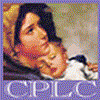
The Vatican

Good Counsel Homes
Catholic Places
Shrines, Basilicas, Cathedrals
Beautiful Holy Places
Catholic Gifts
Scapulars. Jewelry. Crucifixes
Stylish & Modest Fashion
Rosary Crusades
Rosary Crusade for America and The World

Catholic Parents
Online


Faithful Citizenship
Current News from:

American Life League
pro-life Americans


Catholic Pro-Life
Committee
|
For Greater Glory
June 5, 2012 -- The New American -- Jack Kenny
"For Greater Glory" Portrays the Cristeros' Fight for Religious Freedom
....Catholics in the United States today, for example, face the prospect of either denying a tenet of their faith, namely to not practice or promote artificial contraception, or suffer sanctions from the federal government. Not the death penalty, mind you, but something more subtle and subversive — a political and social pressure that demands conformity to a zeitgeist that has little tolerance of allegiance to a higher power. Today’s U.S. government increasingly demands that, as George Will has often put it, “every institution be broken to the saddle of the State.” And in the name of diversity, of course.
read more
June 1, 2012 -- The National Catholic Register -- Tim Drake
For Greater Glory: How a Largely Unknown Story Became an Epic Film
Producer, director, actors discuss their roles in bringing the Cristero history to the big screen.
When the film For Greater Glory opens this weekend, it will tell the largely unknown story of religious persecution that occurred in our own hemisphere within the past century.
The Mexican-made movie tells the tale of the Cristero Rebellion, the Mexican peasant uprising against an oppressive government that took place between 1926 and 1929.
read more
June 1, 2012 -- Catholic World Report
The Story, Martyrs, and Lessons of the Cristero War
An interview with Ruben Quezada about the Cristiada and the bloody Cristero War (1926-29)
Ruben Quezada is the author of For Greater Glory: The True Story of Cristiada—The Cristero War and Mexico's Struggle for Religious Freedom. He is Director for the Catholic Resource Center and St. Joseph Communications, Inc. in Southern California. He is a recognized expert on “The Persecution of the Catholic Church in Mexico in the 1920s” and has traveled internationally as a bilingual speaker giving lectures on this subject for many years to all age groups. He spoke with Catholic World Report about the history of the Cristiada and the Cristero War, depicted in the movie, “For Greater Glory”, which opens in theaters today in the United States.
read more
the film
trailer
The Cristero War
From: wikipedia
The Cristero War came about in response to the anti-clerical laws of the Mexican Constitution of 1917, and its interpretation by the "violent atheist" President Plutarco Elías Calles. Though conflict between state and church marked the presidency of Álvaro Obregón (1920-1924), who "accused the clergy of being insincere and of producing conflict" but "spoke of Jesus Christ as 'the greatest socialist who has been known to Humanity'", it was with Calles' election in 1924 that anti-clerical laws were stringently applied throughout the country. Calles also added his own anti-clerical legislation including a requirement that prohibited priests from ministering unless licensed by the state. State officials then began to limit the number of priests so that vast areas of the population were left with no priest at all. After a zealous persecution of unlicenced ministry, decrepit churches were soon expropriated for use as garages, museums and the like, and the Mexican Bishops, deported or underground, as a last resort of protest suspended all remaining ministry and urged the people to protest the persecution of their faith. Calles presided over the worst persecution of Catholics and clergy in the history of Mexico, including the killing of hundreds of priests and other clergy.
One contemporary is quoted as saying that "while President Calles is sane on all other matters, he completely loses control of himself when the matter of religion comes up, becomes livid in the face and pounds the table to express his hatred." Wearing clerical garb outside of churches was outlawed during his rule and priests exercising their right of political speech could be imprisoned for five years.
On November 18, 1926, Pope Pius XI promulgated the encyclical Iniquis Afflictisque decrying the severe persecution of the faithful in Mexico and the deprivation of the rights of the faithful and the Church.
The formal rebellion began on January 1, 1927 with the rebels calling themselves Cristeros because they felt they were fighting for Christ himself. The Cristeros' battle cry was ¡Viva Cristo Rey! ("Long live Christ the King!"). When Jalisco federal commander General Jesús Maria Ferreira moved on the rebels, he calmly stated that "it will be less a campaign than a hunt." Just as the Cristeros began to hold their own against the federal forces, the rebellion was ended by diplomatic means, in large part due to the pressure of United States Ambassador Dwight Whitney Morrow. The war had claimed the lives of some 90,000: 56,882 on the federal side, 30,000 Cristeros. Numerous civilians and Cristeros were killed in anticlerical raids, while Cristeros killed atheist teachers and people suspected of supporting the government, and even blew up a passenger train.
The persecution was worst under the rule of Tabasco's notorious governor Tomás Garrido Canabal. Garrido's rule, which marked the apogee of Mexican anti-clericalism, was supported by the Radical Socialist Party of Tabasco (PRST) of which he was the leader. In 1916 his predecessor Francisco J. Múgica had restored the name of the state capital Villa Hermosa de San Juan Bautista ("Beautiful Town of St. John the Baptist") to Villahermosa ("Beautifultown").[18] Garrido Canabal founded several fascist paramilitary organizations "that terrorized Roman Catholics",[19] most notably the so called "Red Shirts".
The Catholic Church has recognized several of those killed in connection with the Cristero rebellion as martyrs. Perhaps the best-known is Miguel Pro, SJ. This Jesuit priest was executed by firing squad on November 23, 1927, without benefit of a trial, after trumped up charges. The Calles government hoped to use images of the execution to scare the rebels into surrender, but the photos had the opposite effect. Upon seeing the photos, which the government had printed in all the newspapers, the Cristeros were inspired with a desire to follow Father Pro into martyrdom for Christ. His beatification occurred in 1988. On May 21, 2000, Pope John Paul II canonized a group of 25 martyrs from this period. (They were beatified on November 22, 1992.) For the most part, these were priests who did not take up arms, but refused to leave their flocks, and were executed by federal forces. Thirteen additional victims of the anti-Catholic regime have been declared martyrs by the Catholic Church, paving the way to their beatification. These are primarily lay people, including the 14-year-old José Sánchez del Río. The requirement that they did not take up arms, which was applied to the priest martyrs, does not apply to the lay people, though it had to be shown that they were taking up arms in self-defense.
On September 29, 1932 Pope Pius XI issued a second encyclical on the persecution, Acerba Animi. The effects of the war on the Church were profound. Between 1926 and 1934 at least 40 priests were killed. Where there were 4,500 priests serving the people before the rebellion, in 1934 there were only 334 priests licensed by the government to serve fifteen million people, the rest having been eliminated by emigration, expulsion and assassination. By 1935, 17 states had no priest at all.
Source: http://en.wikipedia.org/wiki/Cristero_War
|
|






